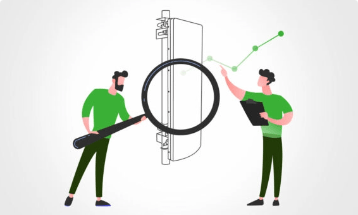A satellite is a moon, planet or machine that orbits a planet or star. For example, Earth is a satellite because it orbits the sun. Likewise, the moon is a satellite because it orbits Earth. Usually, the word “satellite” refers to a machine that is launched into space and moves around Earth or another body in space.
Earth and the moon are examples of natural satellites. Thousands of artificial, or man-made, satellites orbit Earth. Some take pictures of the planet that help meteorologists predict weather and track hurricanes. Some take pictures of other planets, the sun, black holes, dark matter or faraway galaxies. These pictures help scientists better understand the solar system and universe.
Still other satellites are used mainly for communications, such as beaming TV signals and phone calls around the world. A group of more than 20 satellites make up the Global Positioning System, or GPS. If you have a GPS receiver, these satellites can help figure out your exact location.
Why Are Satellites Important?
The bird’s-eye view that satellites have allows them to see large areas of Earth at one time. This ability means satellites can collect more data, more quickly, than instruments on the ground.
Satellites also can see into space better than telescopes at Earth’s surface. That’s because satellites fly above the clouds, dust and molecules in the atmosphere that can block the view from ground level.
Before satellites, TV signals didn’t go very far. TV signals only travel in straight lines. So they would quickly trail off into space instead of following Earth’s curve. Sometimes mountains or tall buildings would block them. Phone calls to faraway places were also a problem. Setting up telephone wires over long distances or underwater is difficult and costs a lot.
With satellites, TV signals and phone calls are sent upward to a satellite. Then, almost instantly, the satellite can send them back down to different locations on Earth.
What Are the Parts of a Satellite?
Satellites come in many shapes and sizes. But most have at least two parts in common – an antenna and a power source. The antenna sends and receives information, often to and from Earth. The power source can be a solar panel or battery. Solar panels make power by turning sunlight into electricity.
Many NASA satellites carry cameras and scientific sensors. Sometimes these instruments point toward Earth to gather information about its land, air and water. Other times they face toward space to collect data from the solar system and universe.
How Do Satellites Orbit Earth?
Most satellites are launched into space on rockets. A satellite orbits Earth when its speed is balanced by the pull of Earth’s gravity. Without this balance, the satellite would fly in a straight line off into space or fall back to Earth. Satellites orbit Earth at different heights, different speeds and along different paths. The two most common types of orbit are “geostationary” (jee-oh-STAY-shun-air-ee) and “polar.”
A geostationary satellite travels from west to east over the equator. It moves in the same direction and at the same rate Earth is spinning. From Earth, a geostationary satellite looks like it is standing still since it is always above the same location.
Polar-orbiting satellites travel in a north-south direction from pole to pole. As Earth spins underneath, these satellites can scan the entire globe, one strip at a time.
Why Don’t Satellites Crash Into Each Other?
Actually, they can. NASA and other U.S. and international organizations keep track of satellites in space. Collisions are rare because when a satellite is launched, it is placed into an orbit designed to avoid other satellites. But orbits can change over time. And the chances of a crash increase as more and more satellites are launched into space.
In February 2009, two communications satellites – one American and one Russian – collided in space. This, however, is believed to be the first time two man-made satellites have collided accidentally.
What Was the First Satellite in Space?
Sputnik 1 was the first satellite in space. The Soviet Union launched it in 1957.
What Is the History of NASA Satellites?
NASA has launched dozens of satellites into space, starting with the Explorer 1 satellite in 1958. Explorer 1 was America’s first man-made satellite. The main instrument aboard was a sensor that measured high-energy particles in space called cosmic rays.
The first satellite picture of Earth came from NASA’s Explorer 6 in 1959. TIROS-1 followed in 1960 with the first TV picture of Earth from space. These pictures did not show much detail. But they did show the potential satellites had to change how people view Earth and space.
How Does NASA Use Satellites Today?
NASA satellites help scientists study Earth and space.
Satellites looking toward Earth provide information about clouds, oceans, land and ice. They also measure gases in the atmosphere, such as ozone and carbon dioxide, and the amount of energy that Earth absorbs and emits. And satellites monitor wildfires, volcanoes and their smoke.
All this information helps scientists predict weather and climate. The information also helps public health officials track disease and famine; it helps farmers know what crops to plant; and it helps emergency workers respond to natural disasters.
Satellites that face toward space have a variety of jobs. Some watch for dangerous rays coming from the sun. Others explore asteroids and comets, the history of stars, and the origin of planets. Some satellites fly near or orbit other planets. These spacecraft may look for evidence of water on Mars or capture close-up pictures of Saturn’s rings.


